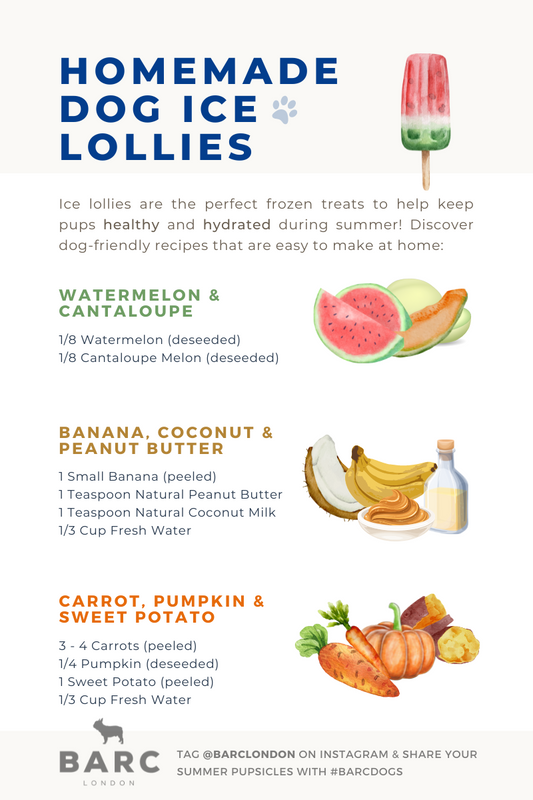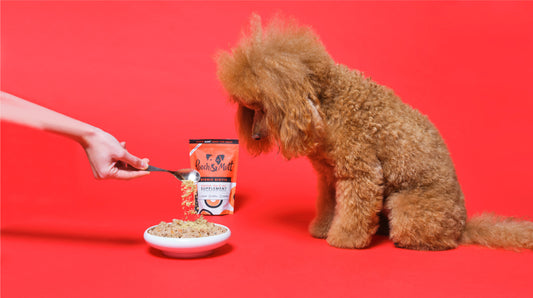With weather warnings currently in force across the UK, it’s more important than ever to make sure that you’re taking the right precautions to keep your dog safe and healthy during cold winter walks.
Don't let your pup's coat of fur fool you - just like us, dogs can be seriously affected by the low temperatures that the winter months bring.
And while all dog owners have a duty to protect their pet's health, many aren't aware of the different factors that risk causing a dog unnecessary pain, suffering or illness.
This year alone, Peta has recorded 24 reported cases of dog deaths from;causes related to cold weather, and 245 dogs who have been rescued from cold-weather related emergency incidents;
Navigating dog ownership isn't always straightforward, and it's completely normal to have questions and concerns about how best to handle the cold snap;
To help, we've put together 7 actionable tips for safe dog walking in winter.
- Can dogs be affected by cold weather?
- How cold is too cold to take a dog for a walk?
- 7 tips for walking a dog in winter:

Source: @truffle.icious via Instagram
Shop the look:
Can dogs be affected by cold weather?
Yes. Just like humans, dogs are susceptible to cold-related illnesses brought on by lower temperatures.
When a dog’s body temperature drops too low, they run the risk of developing hypothermia - a condition that occurs when the body loses heat faster than it produces it.
Hypothermia in dogs can result in slowed breathing and heart rate, stiff muscles, and in extreme cases, death.
While hypothermia is one of the most common winter illnesses in pets, prolonged exposure to lower temperatures can also cause dogs to suffer from:
- Canine cold viruses
- Frostbite
- Kennel cough
How cold is too cold to take a dog for a walk?
When it comes to working out how cold is ‘too cold’ for dog walking in winter, it’s important to consider factors like your dog’s size, breed, age and acclimation to the climate you live in.
As a general rule of thumb, experts recommend dog owners to take extra care when temperatures drop to 7’C or below.
Insurance company Petplan has developed a chart to help dog owners assess appropriate temperatures during winter:

Source: Petplan
7 tips for dog walking in winter:
After ensuring the outdoor temperature won’t put your dog in danger, you’ll want to make sure both you and pup are prepared with all the essentials required to make dog walking in winter enjoyable.
Winter dog walks are a great way to let your dog burn off a little steam and get their daily exercise.
Before heading out into the crisp fresh air, read through our top tips below:
1. Avoid prolonged exposure to cold weather
In winter, it’s a good idea to reduce the amount of time your dog spends outdoors in one period.
Instead of taking your dog for one long walk, consider taking them for multiple shorter walks.
Doing so will help to reduce the chances of your dog developing cold related illnesses, as the longer your pup spends outside, the lower their body temperature will drop.
2. Keep your dog on lead
This tip is particularly important when walking in icy or snowy weather.
When the roads are covered in a layer of ice, the ground will be far more slippy than your dog is used to walking on, increasing the likelihood of falls and injury.
Keeping your dog close by your side can also help them feel safe and comforted, particularly if they aren’t used to these weather conditions.
By walking your dog on lead, you can also keep closer control of where your dog walks.
Snow cover can hide areas that may not be safe to walk through. If your dog is off lead, he or she may venture into dangerous grounds, such as deep holes, hillsides or frozen ponds.
A number of deaths reported by Peta were caused by dogs falling through ice on partially frozen rivers while out on walks.
⚠️ Important: If your dog falls through ice into a pond or river, never try to rescue them by jumping into the water yourself. Stay calm, use recall and encourage them to swim back to you.
As soon as possible, contact the RSPCA's hotline on 0300 1234 999. They will liaise with the London Fire Brigade for rescue assistance if necessary.

Source: @allchloerose via Instagram
Shop the look:
3. Carefully consider your route and timing
This ties into tip two - always remember to check the weather forecast for your local area before heading out. Pay careful attention to weather warnings to ensure the route you plan to take is safe for both you and your dog.
During the cold snap, many areas of the UK are forecasted to experience stronger winds and heavy rainfall.
These weather conditions drastically increase the chances of incidents like falling trees and dropping branches, so avoid walking through forested areas during these times.
Most importantly, never take your dog out for a walk during a storm. Not only is lightning dangerous for dogs, thunder can also be incredibly scary and cause dogs a large amount of anxiety.
4. Regularly check your dog walking accessories
Your dog's harness, collar and lead are essential to ensuring safety when out in public.
While high-quality walking accessories should be resistant to wear and tear, winter weather can cause these products to deteriorate over time.
To avoid this from happening, take care to wipe your dog's walking accessories dry after wet walks to prevent the metal clips, D-rings and buckles from rusting.
5. Prioritise visibility when dog walking in the dark
Dark winter mornings and evenings may mean that your daily dog walks are affected by less light.
With work and family commitments, this can be hard to avoid. So if you aren't able to change the time of your walks, it's important to be properly equipped for reduced visibility.
One way to do this is to wear reflective clothing or a Hi Vis jacket, particularly when walking on pavements beside busy roads.
If your dog has a habit of trying to eat everything in his or her path, use a torch to keep an eye on the ground below to ensure they don’t eat something they shouldn’t.
6. Utilise dog apparel to add a layer of insulation
A great way you an avoid your dog’s temperature dropping when dog walking in winter is to invest in clothing.
On wet walks, a dog raincoat is key to preventing your dog from getting soaked and feeling the cold. The raincoat you choose should be lightweight and breathable to ensure they don’t feel restricted or uncomfortable when walking.
When the temperatures are cold but the weather is dry, a dog puffer jacket is a better choice. With warm padding and insulation, these coats helps to keep dogs warm and protected from cold winds.

Source: @mila.cockerspaniell via Instagram
Shop the look:
7. Wipe your dog down when you get home
When walking a dog in winter, expect them to get a lot more wet and muddy than usual!
Regular baths can help to keep your dog clean and healthy - and remember, you don't always need to use dog shampoo, as doing so too frequently can cause skin irritation and a dry coat.
When the roads get icy, rock salt is often used to help with de-icing. Many people aren't aware that rock salt (a combination of sodium chloride and clit), poses toxicity risks to dogs.
The RSPCA has reported that even ingesting small amounts of rock salt can be dangerous for dogs, causing dehydration, vomiting and lethargy.
Dogs commonly ingest rock salt by licking their paws and fur, so pay close attention to your dog’s paws, legs and belly area and give them a good wipe down as soon as your home.

Source: @threelittlepods_ via Instagram
Shop the look:
How do I protect my dog in winter?
Use our winter dog walking guidelines to keep your dog protected from the elements that accompany colder seasons.
When it comes to keeping your dog warm at home during winter, be sure to:
- Invest in lots of comfy and warm bedding to keep them cosy through the night
- Avoid positioning your dog’s bed in an area of the house where there are cold draughts.
- If possible, raise their bed above the ground away from the cold floor
- Make sure they get enough food to keep their energy levels up. Awareness of your dog's nutrition and diet is essential.
- To avoid them catching a chill, avoid letting them air dry when wet. Instead, use a towel to dry them off to get rid of most of the moisture on their fur.
⚠️ Important: If you're worried that your dog may be suffering from cold-related health issues, contact your local vet as soon as possible for professional advice.
Source: @thetailsofragnarwoofbrook via Instagram
Shop the look:


